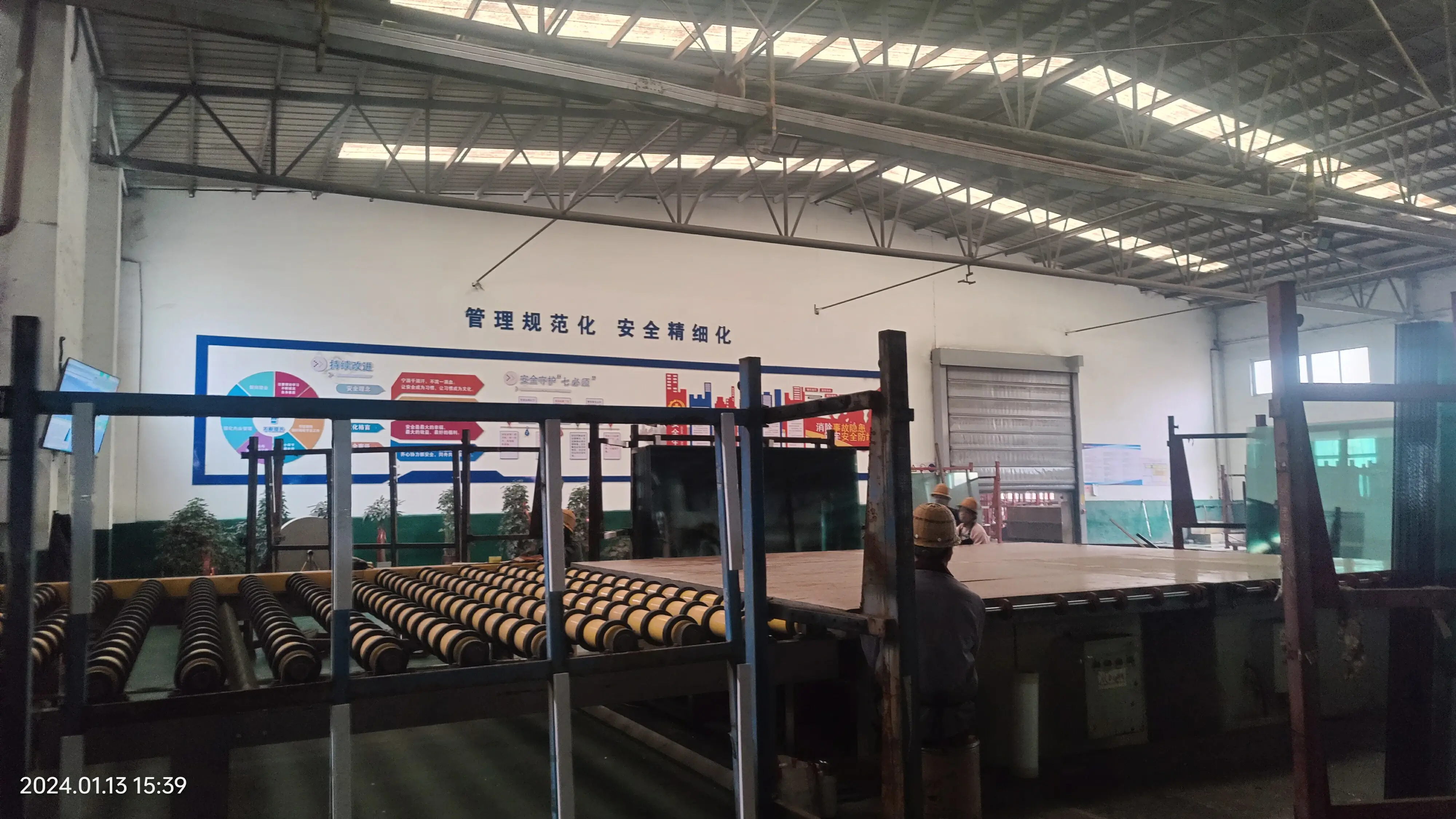

Understanding Clear Annealed Float Glass Features, Benefits, and Applications
Clear annealed float glass is a widely used type of glass that offers a combination of transparency, strength, and versatility. This article explores the characteristics, advantages, manufacturing process, and various applications of clear annealed float glass.
What is Clear Annealed Float Glass?
Float glass is produced through a process that involves melting raw materials, including silica sand, soda ash, and limestone, at very high temperatures to create molten glass. This molten glass is then poured onto a bed of molten tin, which allows it to spread out evenly and form a flat, smooth surface. The term float comes from this process, where the glass floats on the molten tin, resulting in a uniform thickness and clarity.
Once the glass has been formed, it undergoes an annealing process. Annealing involves slowly cooling the glass to relieve internal stresses that can occur during the manufacturing process, ensuring its stability and strength. The result is clear annealed float glass, characterized by its high transparency, clarity, and a distortion-free surface.
Features and Benefits
1. High Clarity and Transparency One of the standout features of clear annealed float glass is its optical properties. The glass offers exceptional clarity, making it ideal for applications where visibility is paramount. It minimizes distortion and allows natural light to pass through effortlessly.
2. Uniform Thickness The float glass production process results in a consistent thickness across the sheet, which is crucial for various applications, especially in architectural and automotive uses.
3. Strength and Durability By undergoing the annealing process, it possesses a desirable combination of strength and resistance to breakage. While it is not classified as tempered glass, its annealed state provides adequate strength for standard applications.
4. Versatility Clear annealed float glass can be easily cut, shaped, and processed. This flexibility allows it to be utilized in a wide range of applications, from windows to furniture and interior design.

5. Eco-Friendly Option Float glass is made from natural raw materials and is recyclable, making it an environmentally friendly choice for architects and builders aiming for sustainable solutions.
Applications
Clear annealed float glass is used in diverse sectors due to its properties and advantages
1. Architecture It is commonly used for windows, facades, and interior partitions in residential and commercial buildings. The high transparency allows for ample natural light, enhancing the aesthetic appeal of spaces.
2. Automotive Clear float glass is utilized in vehicle windows and windshields where visibility and safety are essential.
3. Interior Design It is used in the production of mirrors, glass tables, and display cases, contributing to modern design aesthetics with its clean, crisp look.
4. Electronics Clear annealed glass serves as a cover for screens and displays, protecting sensitive components while maintaining clarity.
5. Industrial It is also employed in various industrial applications, such as protective barriers and display cases in retail environments.
Conclusion
Clear annealed float glass is a remarkable material known for its clarity, strength, and versatility. Its manufacturing process, which includes the critical steps of floating on molten tin and annealing, ensures that it meets the high standards required for numerous applications. As industries continue to innovate, the demand for clear annealed float glass will likely grow, solidifying its status as a fundamental component in architecture, design, and technology. Whether in building projects or everyday items, clear annealed float glass remains an essential choice for achieving both functionality and aesthetic appeal.